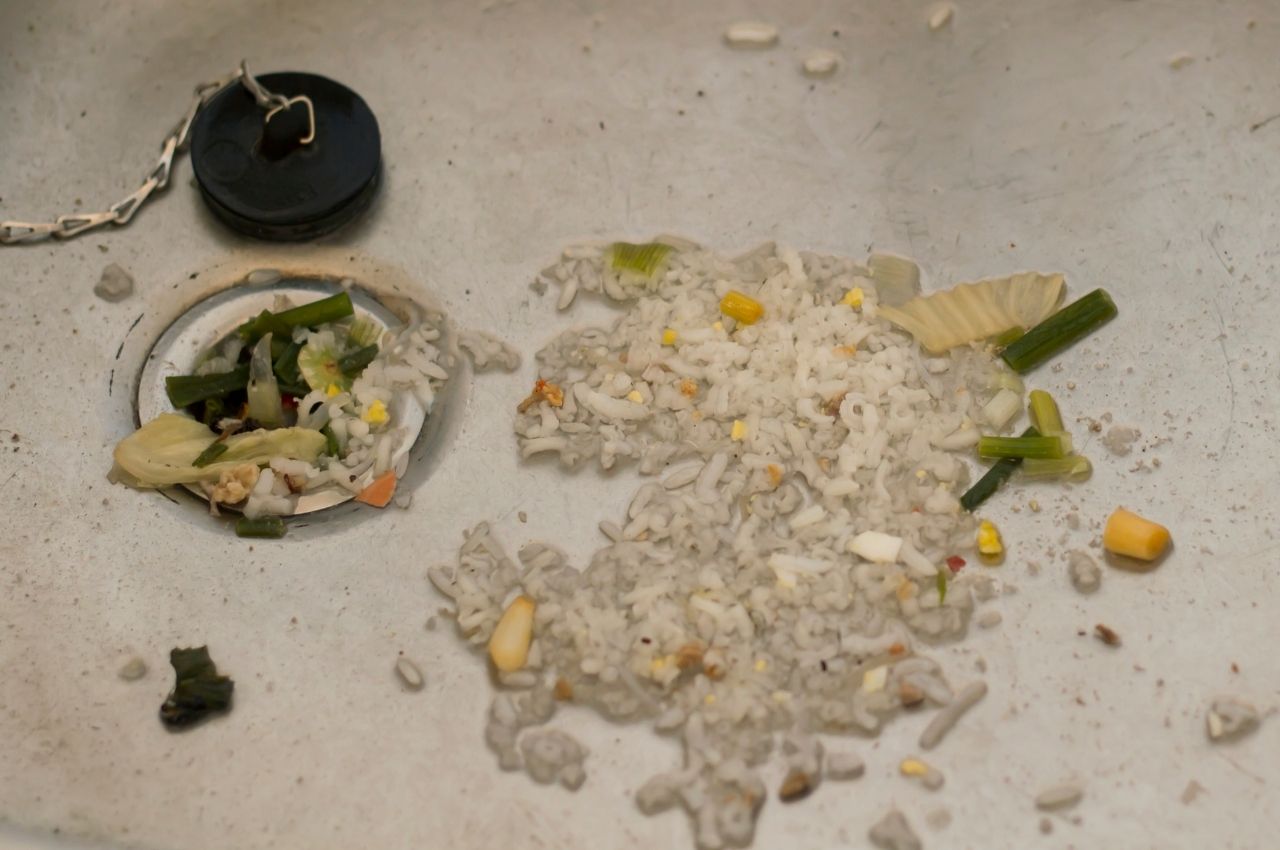
What Can You Put in a Garbage Disposal Unit: Tips to Make It Last!
Garburators work hard to make our lives easier. With the flip of a switch, they can dispose of food scraps without clogging your sink. But unfortunately, some homeowners use the waste disposal unit as a garbage can. And this can lead to major plumbing problems. So, in this blog post, we’ll answer you the following question: what can you put in a garbage disposal unit?
We also talk about other guidelines on what not to put in a garbage grinder.
What Can You Put in a Garbage Disposal Unit?
What can you put in a garbage disposal unit? Most soft, liquid, and biodegradable foods are safe to put in your garburator. You can put citrus rinds, vegetable scraps, fruits, and cooked meat scraps. We advise you to chop large food items so as not to strain the unit.
Garbage disposal blades is a wrong usage of the term. Garburators have a complex grinding system. When you turn on the disposal unit, a fast-spinning disc forces the food waste against the outer wall of the grinding chamber, which then pulverizes food items into tiny bits. Then, you should run cold water so that the ground food waste is washed through the holes in the chamber wall.
9 Forbidden Food Items for Your Garburator
Eggshells
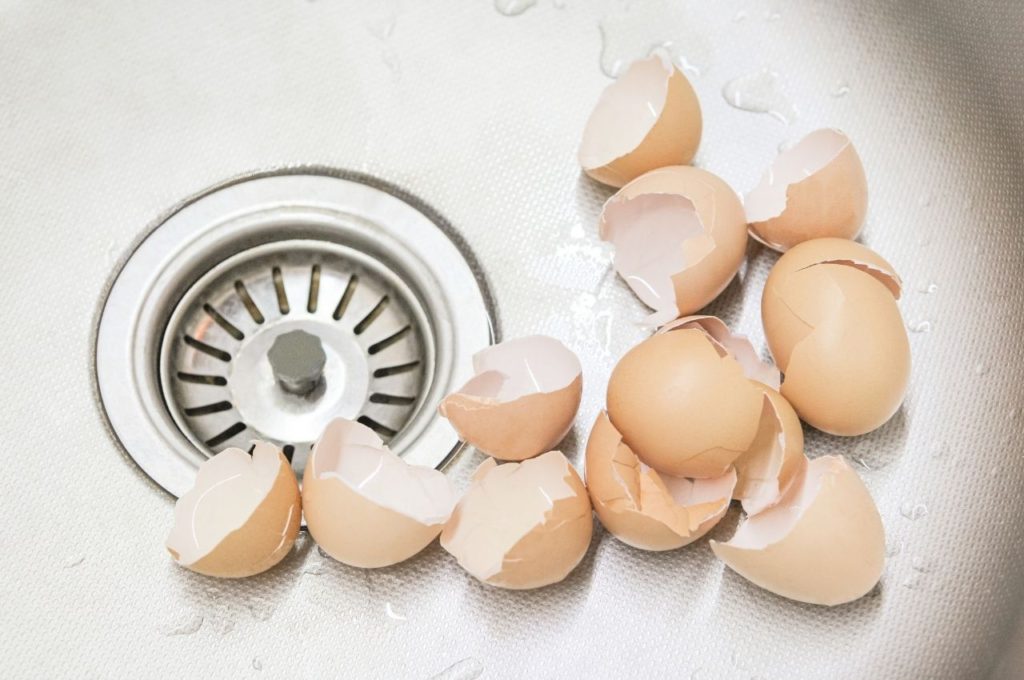
Garburators are mounted to the underside of sinks, and they collect solid food waste in a grinding chamber.
Some people believe they can sharpen the blades by putting eggshells. This is false because garbage grinders do not have blades.
Throwing eggshells in garbage disposal unit is wrong for two reasons.
First, eggshells have an inner and elastic membrane. And some plumbers claim that this inner membrane sticks to grinders.
When the elastic inner membrane sticks to the grinding mechanism, they reduce the effectiveness of the garburator to pulverize food waste.
The other issue is that ground eggshells have a tendency to build up inside the drain pipes. And this leads to a clog when you toss enough shells down the drain.
Coffee Grounds
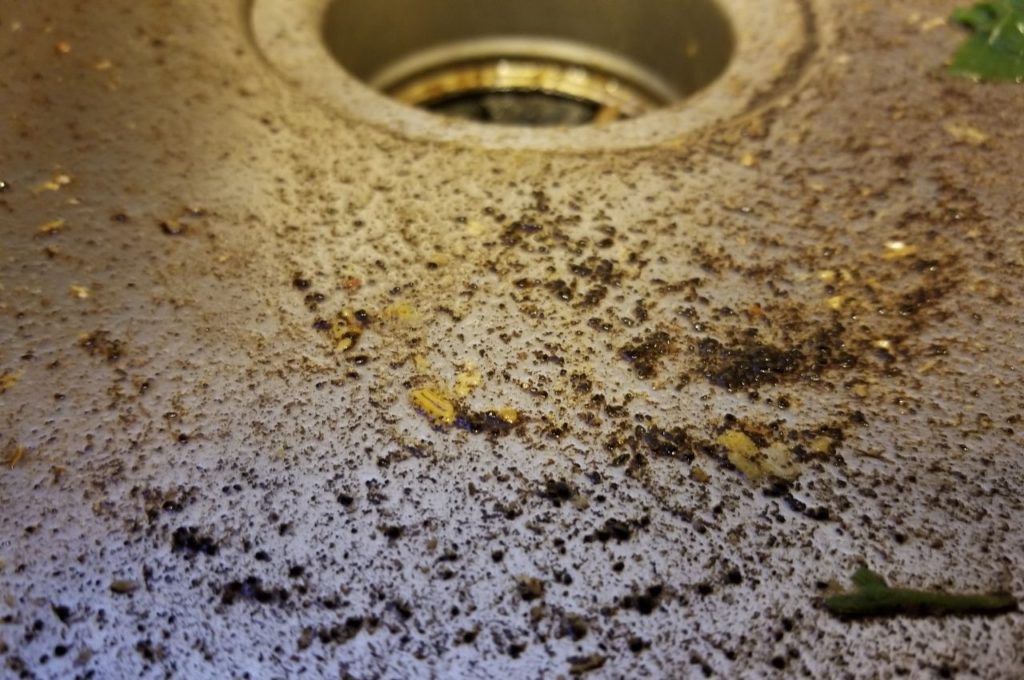
You probably are part of the 60% who love to drink coffee at least once a day.
But how do you clean the coffee maker? What do you do with the coffee grounds remaining in the filter?
Do you throw them in the kitchen sink?
If you do, we recommend not doing it.
According to plumbers, coffee grounds are one of the worst culprits of clogged drains.
Coffee grounds attract grease, and these two build up into a mud-like texture.
This combination increases the likelihood of a clog.
Cooking Oil and Grease

Previously, we talked about the dangers of pouring oil down the drain. And we also told our readers the things to do if they poured grease down the sink.
Grease and oil thicken and stick in plumbing lines. Subsequently, it can easily clog the drain pipes when it hardens.
The best way to dispose of fats and grease is by letting it cool and put it in a sealable container. Then, you freeze it and put it in the garbage can.
Corn Husks

These peelings are fibrous. It’s a type of waste that should stay out of the garbage disposer.
The peelings can wrap around the discs and make them stuck. As a result, the garburator won’t work as it should.
You better throw fibrous veggies and fruit peelings into the trash instead of the garbage disposer. Some of those food waste include celery, asparagus, banana peels, and rhubarb.
Of course, we’re not saying that a single peel or vegetable strand will break your waste disposal unit.
But you should avoid putting the wrong food items into the garburator to keep it working smoothly. Make sure to read the user manual to know the dos and don’ts.
Potato Peels
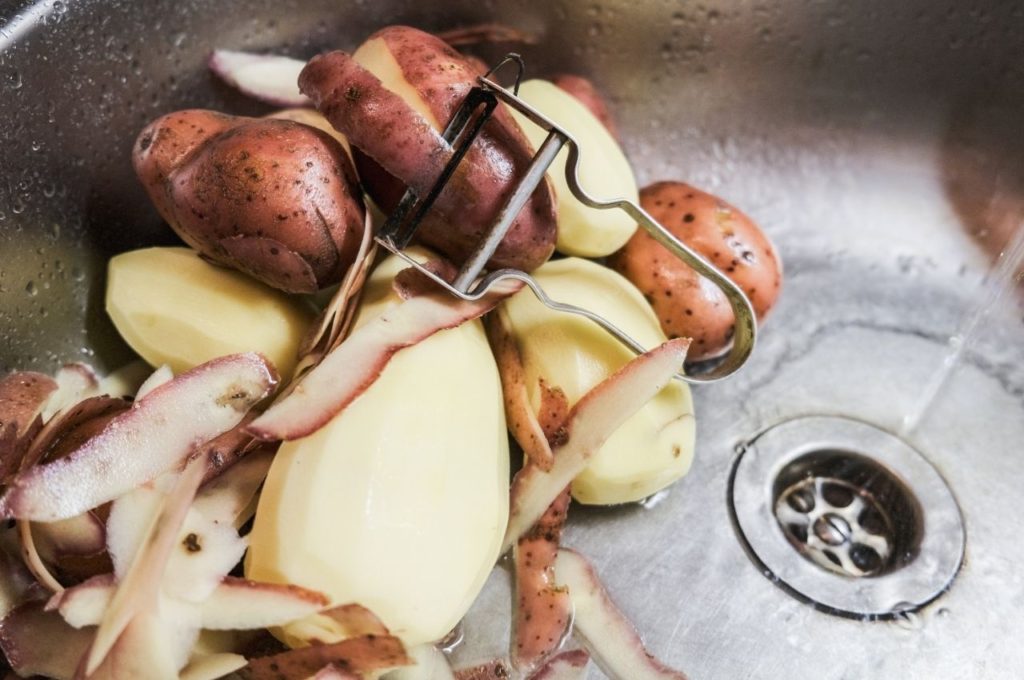
Potato peels contain a high amount of starch. And when the grinding mechanism tries to pulverize them, they form a thick paste that clogs your appliance.
Intact peels can also pass through the waste disposal unit and collect in the drain trap or drain pipes, creating a tough clog. As a result, it is impossible for subsequent foods to be washed through after they are shredded.
Instead of using the garburator, put potato peels directly into the trash can or onto paper towels before discarding them into your compost bin.
You should do the same with other starchy vegetables and beans.
Rice and Beans
As we just mentioned it, beans should stay away from the garbage disposal unit.
When putting rice and beans into the grinder, it happens something similar as with potato peels.
Rice and beans turn into a starchy substance that can clog drains.
A few crumbs of rice or beans will not harm your pipes. But throwing more than 2 tablespoons into the sink could make a mess. You better throw rice and beans leftovers into the trash can.
Small Bones and Seafood Shells
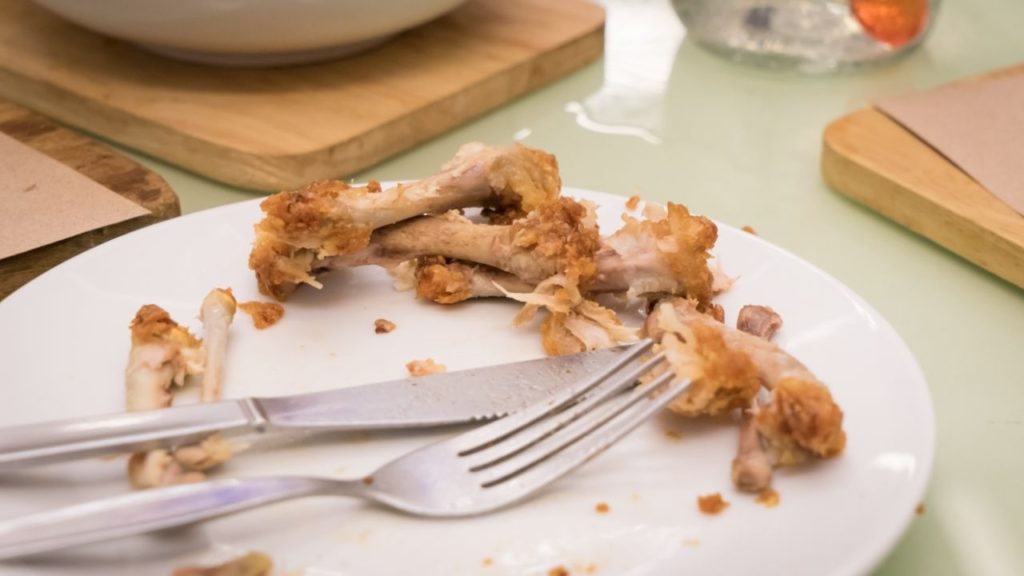
Some homeowners have the wrong concept of what garburators can do.
They use their waste disposal units as the ultimate grinder. But there are certain things that this appliance can’t handle.
Even small bones are too tough for this appliance to grind.
Bones and seafood shells will keep spinning around in the chamber. They can even ruin your appliance. And if they manage to pass through the garbage disposal unit, bones and shells won’t go all the way through the pipes and a blockage is sure to follow.
Some other forbidden food items for your garburator are:
- Onion skins
- Small amounts of pasta and rice
- Peanut butter
- Fruit pits
Non-Food Items
We included this subtopic just to clear all doubts. If you want your garburator to last, you should take care of it.
You should read the user manual to know the don’ts. Here is a list of things you shouldn’t put down the sink:
- Rubber bands
- Twist ties
- Cigarette butts
- Sponges
- Fabric
- Hair
Alternative Way to Dispose of Food Waste to Prolong Your Garburator’s Life
Appliances last longer when you maintain and care for them.
So, the garburator is not the exception.
When running the waste disposal unit, make sure to pour cold water because hot water can overheat it.
Also, keep in mind what can you put in a garbage disposal unit, and in this way, you’ll prolong the life of your appliance.
One of the best ways to avoid loading your garbage grinder is to create a compost pile with food waste. You can use fruit scraps, fibrous veggies, grains, bread, pasta, rice, coffee grounds, and eggshells. Composting is a great alternative to avoid putting the wrong food waste into your garburator.
In case your garbage disposal starts to fail, you can always call us to get some tips.
